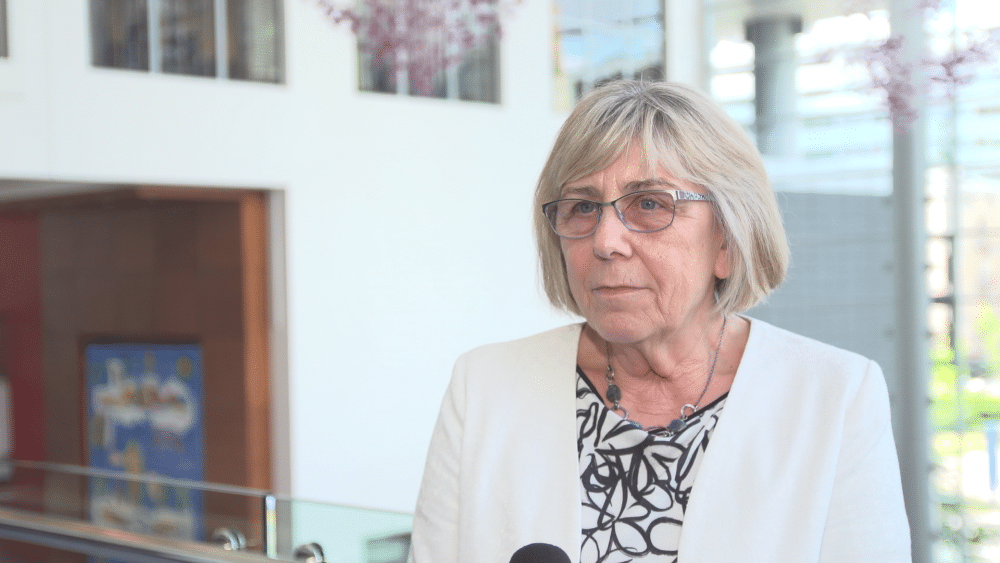In 2023, 272,000 children were born, which is the lowest number since World War II. This year’s data is even worse. In the first half of 2024, approximately 126.5 thousand births were registered, which is almost 12.5 thousand less than the previous year – according to data from the Central Statistical Office (GUS). The issue of generational replacement is gaining importance due to problems related to reproductive health. The World Health Organization (WHO) considers fertility problems in both men and women to be a significant health issue. “This is a topic that is not addressed at all,” assesses Elżbieta Gołata, Ph.D., leading the Committee of Demographic Sciences of the Polish Academy of Sciences. “Not only reproductive health, but also the overall health of the population is one of the most important demographic and social challenges.”
Poland is one of the countries facing a rapid population decline. In 2023, 272 thousand children were born, 11% less (33,000) than a year earlier. The fertility rate in Poland was 1.158, which is significantly below the value that ensures generational replacement (2.10). The population has been decreasing since 2012 (except for 2017). This is primarily due to natural increase, which has been negative for the last decade. GUS estimates that significant changes ensuring stable demographic development cannot be expected in the near future. The COVID-19 pandemic has further deepened the unfavorable trends observed over the past decade.
“Poland is among the countries that have most tragically experienced the effects of the COVID-19 pandemic. The loss in population is huge, reaching the level of a national tragedy, as 180,000 people have died. It is crucial to properly prepare the health service and to maintain the health of the population. We often don’t talk about it, focusing on fertility and potentially prolonging life, but we don’t discuss the state of Polish health,” says Elżbieta Gołata, Ph.D., from the University of Economics in Poznań.
Families increasingly decide to have children later in life. In 1990, the average age of a woman at the birth of her first child was 22.7, now – it’s almost 29. Since the years 1990–2022, the proportion of mothers who are at least 30 years old has doubled. According to a study conducted by Ipsos for OKO.press in 2022, 41% of respondents stated that women do not decide to become mothers due to fear of losing their jobs. A slightly smaller percentage pointed to high costs associated with raising a child.
The Committee of Demographic Sciences of the Polish Academy of Sciences plans to organize a conference dedicated to population reproductive health, a topic which is not addressed but is very important, also from a demographic perspective, this autumn.
The WHO states that reproductive health is a state of complete physical, mental and social well-being, and not merely the absence of disease or infirmity, in all matters relating to the reproductive system and its functions and processes.
In its current term, the Committee of Demographic Sciences of the Polish Academy of Sciences has made reproductive health the key subject of its debates “Reproductive Health over Life”. The cycle is inaugurated by an international conference entitled “Reproductive Health and Fertility – Demographic Perspective”, which will take place in a hybrid form on 23 October 2024 in Warsaw.
The committee in its invitation to the conference emphasizes that in previous discussions about the causes of low fertility rate in Poland and about the public policy solutions that can support procreation, not much attention was paid to reproductive health. Yet, this issue is becoming increasingly important in debates about the global trend of fertility rate reaching a level that does not guarantee simple generational replacement. The WHO recognizes fertility problems in women and men as a significant health issue in today’s world and suggests public health actions that can help reduce it.
According to GUS data, in 2023, the average life expectancy for men in Poland was 74.7 years, while for women it was 82 years. Compared to 2022, it increased by 1.3 and 0.9 years respectively. Compared to 1990, it was higher by 8.5 and 6.8 years respectively. However, experts emphasize that not only is the expected life expectancy important, but also the question of whether additional years of life gained due to increased longevity are spent in good or bad health.
Indicators of expected healthy life expectancy, such as healthy life years (also known as expected life years without disability), focus on the quality of life spent in health. According to Eurostat data, in 2022 in the EU, healthy life expectancy was 62.8 years for women and 62.4 years for men. This represented about 75% and 80% of the total expected life expectancy for women and men respectively. Eurostat indicates that in Poland it is about 60.8 years for men and 64.1 years for women.
“This, of course, is a matter of the health care system, rehabilitation. I remember one of the conversations with doctors who noted that our individual awareness of health-promoting behaviors, how we should pay attention to our lifestyle, how we feed ourselves, how we live, is very important. More and more people are taking up sports, paying attention to healthy eating, but perhaps still too few –” notes prof. Gołata.
